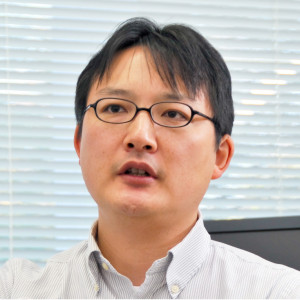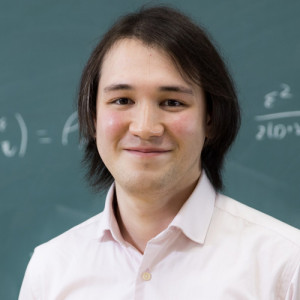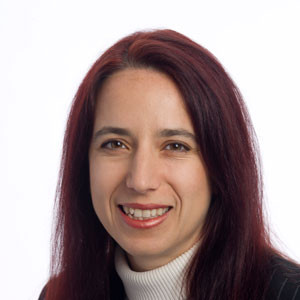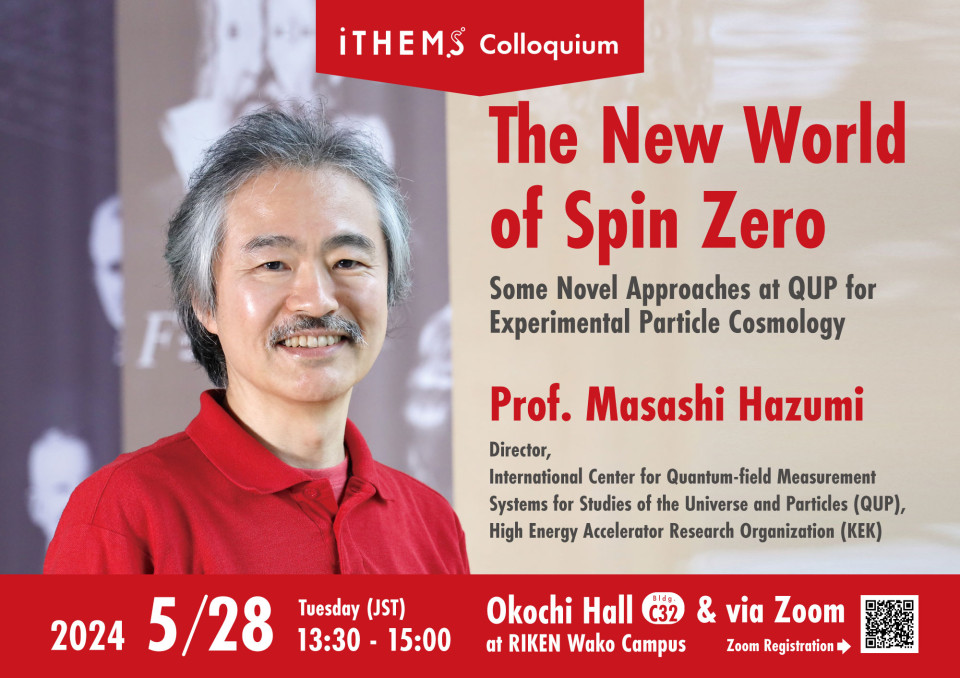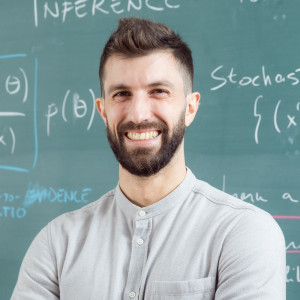Volume 291
Back to Newsletter List
Award
Yuji Sugita and RIKEN SUURI Corporation received the 6th Japan Open Innovation Prize
2024-02-19
Yuji Sugita (Chief Scientist, Theoretical Molecular Science Laboratory/Senior Research Scientist, iTHEMS) and RIKEN SUURI Corporation, received the 6th Japan Open Innovation Prize, Minister of Education, Culture, Sports, Science and Technology Award, together with the National Institute of Biomedical Innovation, Health and Nutrition, JSOL Corporation, and Quantum Simulation Technologies, Inc. The award ceremony was held on February 14 at the Cabinet Office Central Government Building.
Congratulations!
RIKEN SUURI was established at the initiative of iTHEMS and JSOL Corporation, with the aim of becoming "a company that makes the best use of mathematical science to solve fundamental problems in society".
- Yuji Sugita received the 6th Japan Open Innovation Prize | RIKEN (in Japanese)
- The 6th Japan Open Innovation Prize | Cabinet Office (in Japanese)
- Received the 6th Japan Open Innovation Prize | RIKEN SUURI (in Japanese)
- Established RIKEN SUURI CORPORATION with investment from RIKEN, RIKEN Innovation Co., Ltd., and JSOL | RIKEN (in Japanese)
- Established RIKEN SUURI CORPORATION with investment from RIKEN, RIKEN Innovation Co., Ltd., and JSOL | YouTube (in Japanese)
- JSOL/RIKEN SUURI (in Japanese)
Seminar Report
ABBL-iTHEMS Joint Astro Seminar by Yosuke Mizuno on February 8, 2024
2024-02-19
On February 8th, Prof. Yosuke Mizuno (Shanghai Jiao Tong University) gave a talk about the numerical simulations of the jet launching process at the vicinity of black holes. Supermassive black holes hosted in active galaxies are known to launch relativistic jets and emit electromagnetic signals across a wide range of energy bands. A notable example is the nearby supermassive black hole hosted in the M87 galaxy. Recent results from the Event Horizon Telescope, which has provided a radio image of the vicinity of the black hole, have revealed a signature of curved space-time. In the talk, after giving a broad overview of this topic, he described the current understanding of the physics at the horizon scale of black holes based on his numerical simulations. He carried out 3D general relativistic magneto-hydrodynamical simulations and general relativistic radiative transfer calculations to investigate the jet launching process and the radiative signature at the horizon scale. He has shown that his calculations can successfully reproduce the results of the Event Horizon Telescope. At the same time, while it is robust that the curved space-time signature is present in the observation, uncertainty remains in the physical properties such as the spin of black hole and the degree of magnetization of the accretion flow. To further pin down these properties, higher quality observational data are required.
Reported by Hirotaka Ito
Relativistic Jet Simulations and Modeling on Horizon Scale
February 8 (Thu) 13:00 - 14:30, 2024
Upcoming Events
Seminar
Math-Phys Seminar
A Selective Survey of Ideas, Tools and Results in Constructive Field Theory
February 26 (Mon) 13:00 - 14:30, 2024
Christy Koji Kelly (Special Postdoctoral Researcher, RIKEN Interdisciplinary Theoretical and Mathematical Sciences Program (iTHEMS))
In this talk we discuss some aspects of constructive field theory with an emphasis on analytical and probabilistic methods and results. In particular after an overview of some points in the history of constructive QFT we plan to discuss some early achievements in axiomatic QFT, some features of the theory of distributions and the basic structure of the Wightman reconstruction theorem. We also introduce the Osterwalder-Schrader axioms and overview the strategy for the construction of nontrivial measures describing path-integrals for interacting QFTs.
Depending on time constraints we might also discuss probabilistic tools (weak convergence of measures, the Bochner-Minlos theorem etc), Gaussian measures, UV regularity of simple QFTs and the construction of (infinite volume) Euclidean P(phi)_2 measures. The plan is to discuss some of these topics in some detail after the end of the official seminar.
Venue: via Zoom / Seminar Room #359, 3F Main Research Building, RIKEN
Event Official Language: English
Seminar
Information Theory Seminar
An Investment Banker’s Journey to the World of Physicists -Seeking the Truth in Economics and Finance
February 26 (Mon) 15:30 - 17:00, 2024
Irena Vodenska (Professor, Boston University, USA)
I encountered many exciting opportunities to learn, grow intellectually, and teach during my educational, professional, and scientific journey. Life brings chances, and it is up to us to take or leave them. I took my chances, one of the fascinating ones being to embark on a scientific interdisciplinary research collaboration with physicists. My background is in economics and finance, and doing research with physicists has been fascinating from many different points of view, especially in light of being free from any ONE discipline, free to explore research possibilities to answer finance and economic questions based on a boundless horizon of possible solutions.
I worked as an investment banker after my first graduate degree before returning to academia to continue chartering new pathways to research. During my work as a hedge fund manager and a NASDAQ market maker, I had an opportunity to witness firsthand, on the trading floor, the US market collapse sparked by the demise of the Long Term Capital Management in 1998 and later the European market plunge during the tragic events of the terrorist attack on New York City on September 11, 2001, when I lived and worked on Manhattan.
Most world problems today are complex to solve with one discipline, as multidisciplinary THINKING is needed to cover various aspects of scientific inquiry. Experience is essential, translating real-world knowledge into academia even more so. I was fortunate to be in a position to build the bridge between investment banking and academia. Learning about the pioneer of Econophysics, Boston University Professor H. Eugene Stanley, was like discovering a gold mine for me. After an exciting investment banking experience in the 1990s and early 2000s, I left my investment banking job in New York City to join Professor Stanley’s research laboratory, a time I will cherish and remember as formative, enlightening, and transformative for the rest of my life.
One may ask why physicists work with economists on financial economics problems. The answer is simple: physicists are naturally curious, inquisitive, and open to new ideas. Moreover, physicists and economists share the same language, the language of mathematics. The value of the achievement in econophysics research is the results and the empirical outcome based on data obtained with solid models grounded in natural and social science theory. It is not trivial to produce interdisciplinary research, but recognizing its necessity is already prominently featured in many universities’ strategic plans, including Boston University.
Let me lay out several studies and results to give you a glimpse into the research I will discuss today. We analyze economic time series and panel data to understand their relationships and investigate whether some economic data could be informative of the behavior of others. We use a novel approach comprised of Complex Hilbert Principal Component Analysis (CHPCA), Rotational Random Shuffling (RRS), and Helmholtz-Hodge (HH) potential to unearth statistically significant co-movements and identify noteworthy economic and geopolitical events that might influence such co-movement dynamics. I will present results from four cases studied collaboratively with my international research collaborators over the last decade since 2013.
Venue: Seminar Room #359, 3F Main Research Building, RIKEN / via Zoom
Event Official Language: English
Colloquium
iTHEMS Colloquium
The New World of Spin Zero - Some Novel Approaches at QUP for Experimental Particle Cosmology -
May 28 (Tue) 13:30 - 15:00, 2024
Masashi Hazumi (Director, Professor, International Center for Quantum-field Measurement Systems for Studies of the Universe and Particles (QUP), High Energy Accelerator Research Organization (KEK))
Particle cosmology is a discipline seeking a fundamental understanding of the Universe based on particle physics. Five mysteries drive our research today: cosmic inflation, baryon asymmetry, neutrino properties, dark matter, and dark energy.
Resolving any of the five mysteries will revolutionize our picture of the Universe. Numerous interesting theoretical hypotheses have been proposed to this end. Many require new scalar quantum fields, such as inflatons, axions, supersymmetric particles, etc. They are, in a sense, an attempt to expand the role of the vacuum. Since we have not found such spin-zero fields yet, we shall invent new eyes to make an experimental or observational breakthrough.
The International Center for Quantum-field Measurement Systems for Studies of the Universe and Particles (QUP) was established in December 2021 at KEK under the WPI program of MEXT and JSPS. With its tagline of "bring new eyes to humanity," one of the primary missions of QUP is inventing and developing such new eyes for particle cosmology. In this seminar, after briefly introducing QUP, I focus on research topics I have contributed, including the LiteBIRD satellite to study inflatons and light scalar quantum field searches with novel methods using quantum sensing techniques.
Venue: Okochi Hall, 1F Laser Science Laboratory, RIKEN / via Zoom
Event Official Language: English
Seminar
iTHEMS Biology Seminar
Plant hackers: galling insects extend their phenotypes on the trees by novel plant organogenesis
February 27 (Tue) 16:00 - 17:00, 2024
Xin Tong (Special Postdoctoral Researcher, Cell Function Research Team, RIKEN Center for Sustainable Resource Science (CSRS))
When it comes to plant-insect interactions, insects are generally seen as pests like caterpillars eating vegetables or fruits. However, one group of insects, the galling insects can induce de novo organogenesis on the host plants which are often woody plants. Each galling insect species ‘designs’ its own gall as the extended phenotype which are so-called species-specific gall formation. Different from leaves and roots, galls represent unique plant organs swiftly formed in response to parasitic organisms, observed across diverse plant species. Yet, the precise mechanisms by which normal plant development is interrupted and redirected to form galls by galling organisms remain elusive. During the talk, I will share some discoveries and views related to aphid gall formation on the elm tree, which is the super host plant for more than 30 galling species, and further discussion about why an insect gall is not simple cell mass but well-organized structure, and how we could systematically understand insect gall formation.
Venue: Hybrid Format (3F #359 and Zoom), Main Research Building, RIKEN Wako Campus
Event Official Language: English
Seminar
Quantum Computation SG Seminar
Using a trapped ion quantum computer for hamiltonian simulations
February 28 (Wed) 10:30 - 12:00, 2024
Enrico Rinaldi (Senior Research Scientist, Quantum Machine Learning and Algorithms, Quantinuum K.K.)
Trapped ion quantum computers, like the H-series quantum hardware by Quantinuum, robustly encode quantum information in long lived and precise qubits. However, utilizing the hardware efficiently requires a full-stack workflow from software libraries to hardware compilers. In this talk we introduce the relevant elements of this stack in the context of solving the quantum dynamics of a spin system on H-series hardware: we start from the definition of the Hamiltonian operator in the qubit Hilbert space using the open-source pytket python library and we define the quantum circuits in measurements to run, on a simulator first and on hardware later.
Venue: Seminar Room #359, 3F Main Research Building, RIKEN / via Zoom
Event Official Language: English
Seminar
Lab-Theory Standing Talks
Basic experimental considerations for analyzing gene expression
February 28 (Wed) 13:00 - 14:00, 2024
Hirotaka Toh (JSPS PD Researcher, RNA Systems Biochemistry Laboratory, RIKEN Cluster for Pioneering Research (CPR))
Methods such as RNA-sequencing and ribosome profiling are indispensable tools for the comprehensive elucidation of the mechanisms underlying gene expression. A fundamental aspect that requires meticulous attention in the execution of these experiment is the extraction of intact RNA and Ribosomes. The integrity and purity of the extracted RNA is critical to ensure the accuracy and reliability of the sequencing data. In this seminar, I will introduce the basic but key points of the extraction process.
Venue: 3rd floor public space, Main Research Building, RIKEN Wako Campus
Event Official Language: English
Workshop
RIKEN-Nara Women's University Joint Diversity Promotion Workshop 2024
February 29 (Thu) - March 1 (Fri) 2024
The RIKEN Interdisciplinary Theoretical and Mathematical Sciences Program (iTHEMS) and the Faculty of Science at Nara Women's University are promoting a project to foster female researchers under the auspices of the RIKEN Diversity Promotion Office. As part of the program, 23 undergraduate and graduate students from Nara Women's University will visit several laboratories on the RIKEN Wako campus to ask questions about their research and hold workshops/presentations with iTHEMS researchers.
Organizers:
RIKEN Interdisciplinary Theoretical and Mathematical Sciences Program
Faculty of Science, Nara Women's University
Program:
Thursday, February 29
13:30-14:00 Opening remarks by Tetsuo Hatsuda (C01, Main Research Bldg. room 246-248)
14:00-15:30 Atomic, Molecular & Optical Physics Laboratory (CPR) (C32, Laser Bldg. 2F)
15:30-17:00 Neural Circuit of Multisensory Integration RIKEN Hakubi Research Team (CBS) (C56, Brain Science Ikenohata Bldg. 3F)
17:00-18:30 RIKEN Interdisciplinary Theoretical and Mathematical Sciences Program (iTHEMS) (C01, Main Research Bldg. 3F)
18:30-21:00 Presentations by Nara Women's University Students (C01, Main Research Bldg. 3F)
Friday, March 1
9:00-10:30 Nishina Center RIBF Facility (RNC) (E01, Nishina RIBF Bldg.)
10:30-12:00 Cellular Informatics Laboratory (CPR) (S01, Biology Science Bldg.3F)
12:00-13:00 Lunch (C61, Welfare and Conference Bldg.)
13:00 Closing
Venue: via Zoom
Seminar
ABBL-iTHEMS Joint Astro Seminar
Do plants have bones? Silica phytoliths and their role and fate in the development of terrestrial plants and human civilizations
March 1 (Fri) 14:00 - 15:15, 2024
Mikhail Blinnikov (Professor, St. Cloud State University, USA)
Silicon is the second most common element in the Earth’s crust. Some families of higher plants evolved mechanisms for soluble silica to be carried by xylem from groundwater and deposited as plant opal in or around plant cells as phytoliths thought to play a role in the structural support and defense against herbivores. While known since the early 19th century, phytoliths remain an intriguing class of microfossils whose formation and role in plants and their preservation in soils and sediments are a subject for a lot of active research. I outline some emerging themes in phytolith analysis including phytoliths’ role in global biogeochemical cycles, plant-herbivore interactions, and their tracing of evolution of cultural plants, especially cereals such as rice (Oryza), wild rice (Zizania), maize (Zea), wheat (Triticum) and millet (Panicum), all relevant to global archaeology. Some emerging research on phytoliths connects their changes in shapes to plant taxonomy of some families such as grasses and opens up avenues for further investigation of their active construction in the cells of some taxa by yet undiscovered genetically mediated mechanisms. New image analysis techniques and some advanced microscopy methods will allow us to further the field of phytolith study using deep machine learning algorithms and true 3D analysis of their shapes, something where contribution from other branches of science are most welcome.
Venue: Seminar Room #359, 3F Main Research Building, RIKEN / via Zoom
Event Official Language: English
Seminar
DMWG Seminar
Multimessenger probes of superheavy dark matter decay and annihilation
March 26 (Tue) 10:18 - 11:00, 2024
Saikat Das (Postdoctoral Fellow, Yukawa Institute for Theoretical Physics, Kyoto University)
We revisit constraints on decaying very heavy dark matter (VHDM) using the latest ultrahigh-energy cosmic-ray (UHECR; E >1e18 eV) data and ultrahigh-energy (UHE) gamma-ray flux upper limits, measured by the Pierre Auger Observatory. We present updated limits on the VHDM lifetime for masses up to ∼ 1e15 GeV, considering decay into quarks, leptons, and massive bosons. In particular, we consider not only the UHECR spectrum but their composition data that favors heavier nuclei. Such a combined analysis improves the limits at <1e12 GeV because VHDM decay does not produce UHECR nuclei. We also show that the constraints from the UHE gamma-ray upper limits are ∼ 10 times more stringent than that obtained from cosmic rays, for all of the Standard Model final states we consider. The latter improves our limits to VHDM lifetime by a factor of two for dark matter mass >1e12 GeV. We also provide constraints using neutrino flux from dark matter decay, including the neutrino-induced cascades. We consider the interaction of UHE neutrinos with the cosmic neutrino background, leading to the attenuation of the extragalactic flux reaching Earth, which improves our analysis to obtain tighter constraints.
Venue: via Zoom
Event Official Language: English
Paper of the Week
Week 4, February 2024
2024-02-22
Title: Lattice QCD and Baryon-Baryon Interactions
Author: Sinya Aoki, Takumi Doi
Journal Reference: "Handbook of Nuclear Physics" (Springer, 2023), edited by I.
Tanihata, H. Toki and T. Kajino, ISBN 978-9811963445
doi: https://doi.org/10.1007/978-981-15-8818-1_50-1
arXiv: http://arxiv.org/abs/2402.11759v1
Title: Charge-density wave transition in magnetic topological semimetal EuAl$_4$
Author: R. Yang, C. C. Le, P. Zhu, Z. W. Wang, T. Shang, Y. M. Dai, J. P. Hu, M. Dressel
doi: https://doi.org/10.1103/PhysRevB.109.L041113
arXiv: http://arxiv.org/abs/2311.15834v1
Title: Resurgence in Lorentzian quantum cosmology: no-boundary saddles and resummation of quantum gravity corrections around tunneling saddles
Author: Masazumi Honda, Hiroki Matsui, Kazumasa Okabayashi, Takahiro Terada
arXiv: http://arxiv.org/abs/2402.09981v1
If you would like to cancel your subscription or change your email address,
please let us know via our contact form.
Copyright © iTHEMS, RIKEN. All rights reserved.


